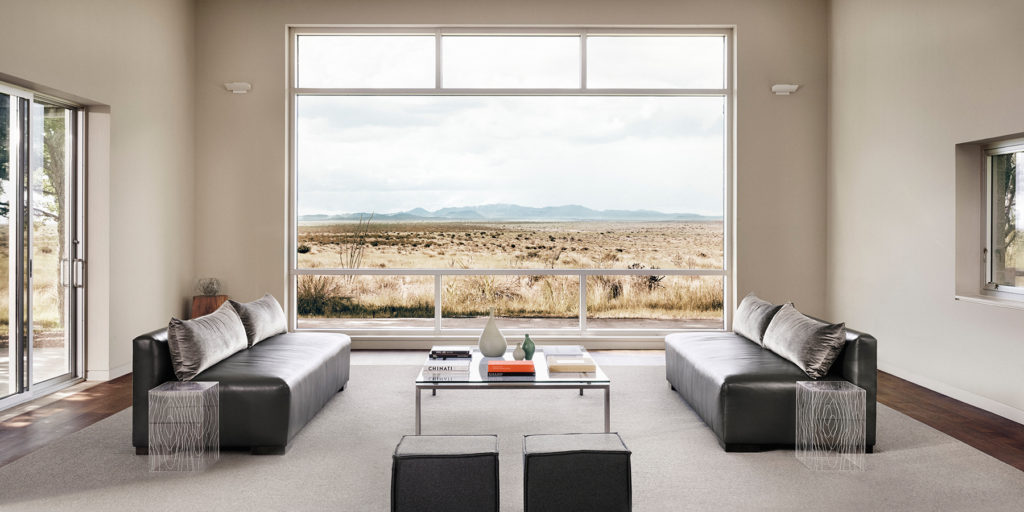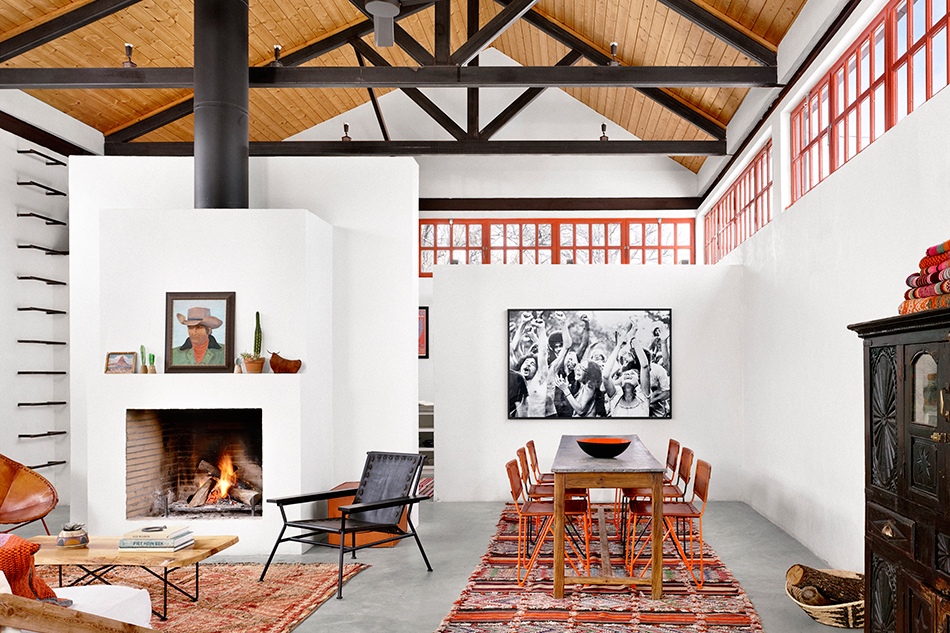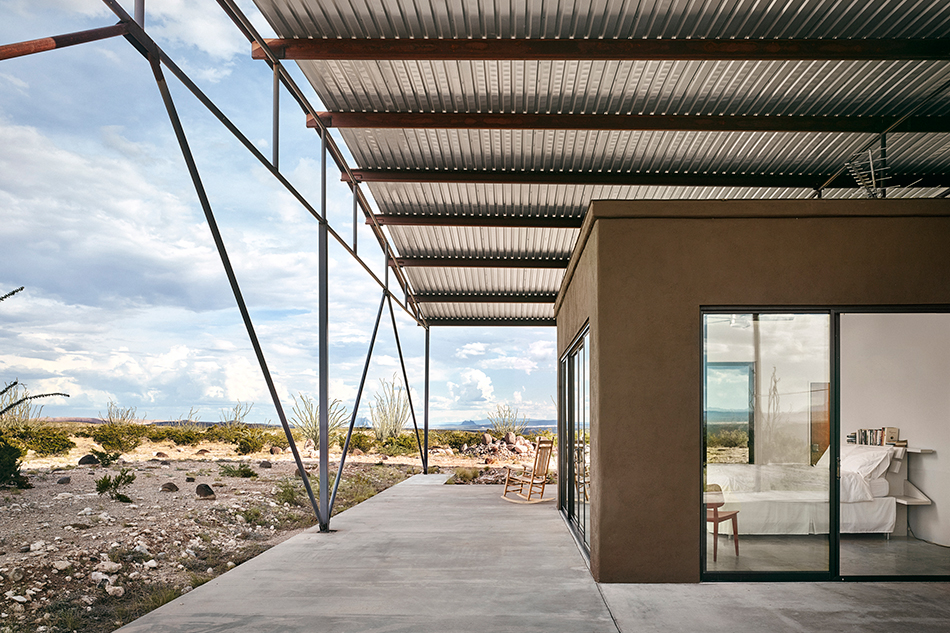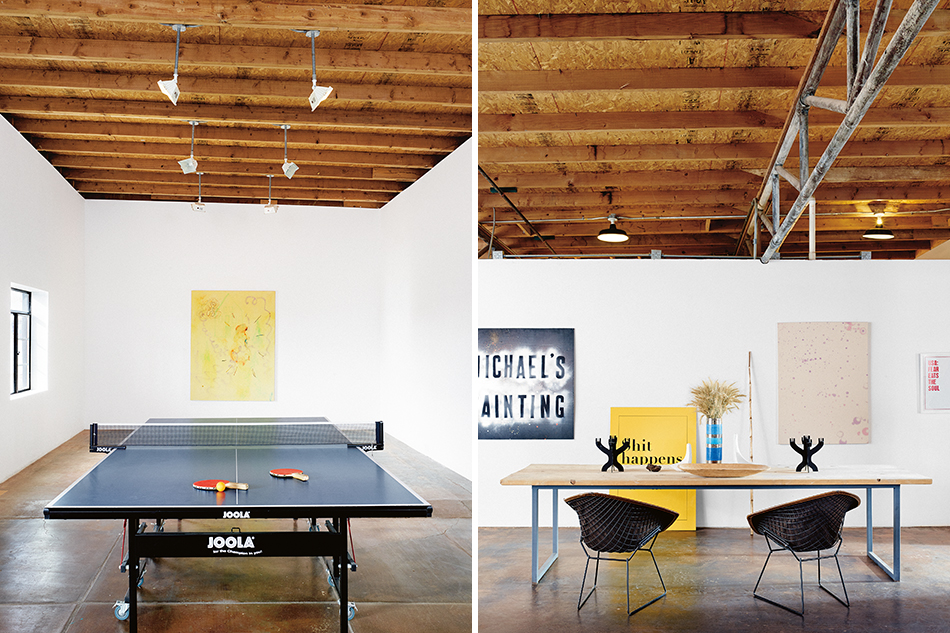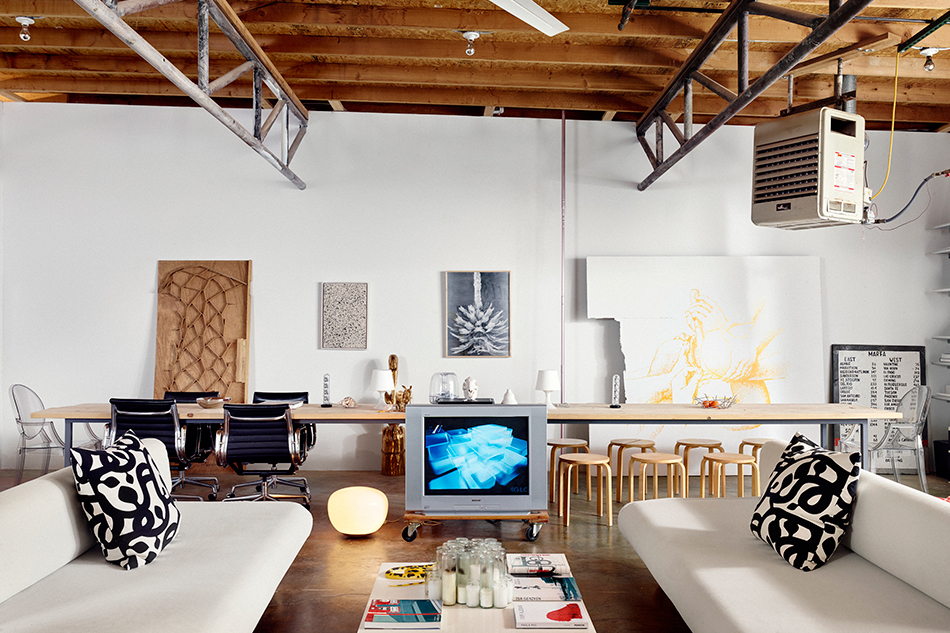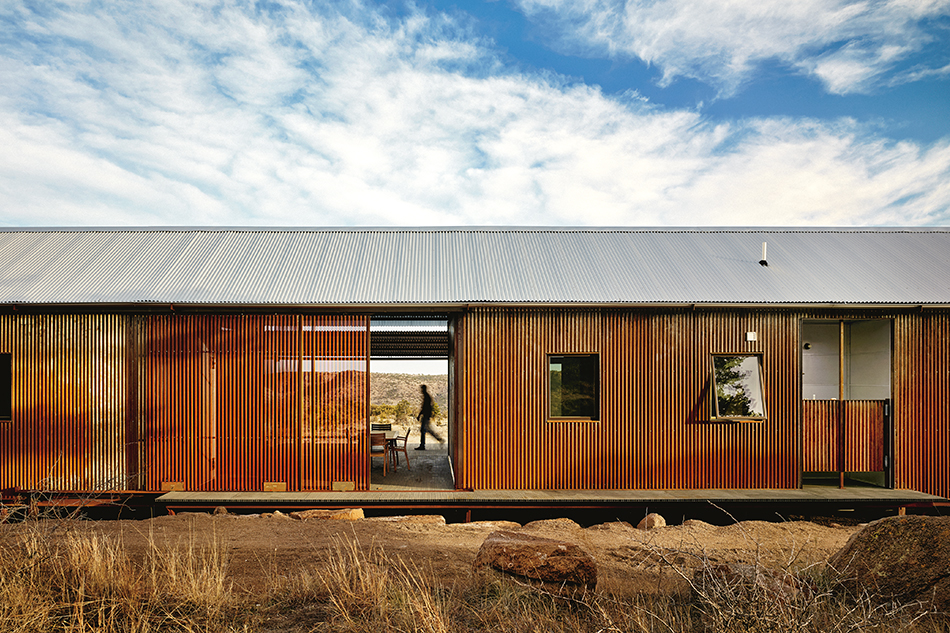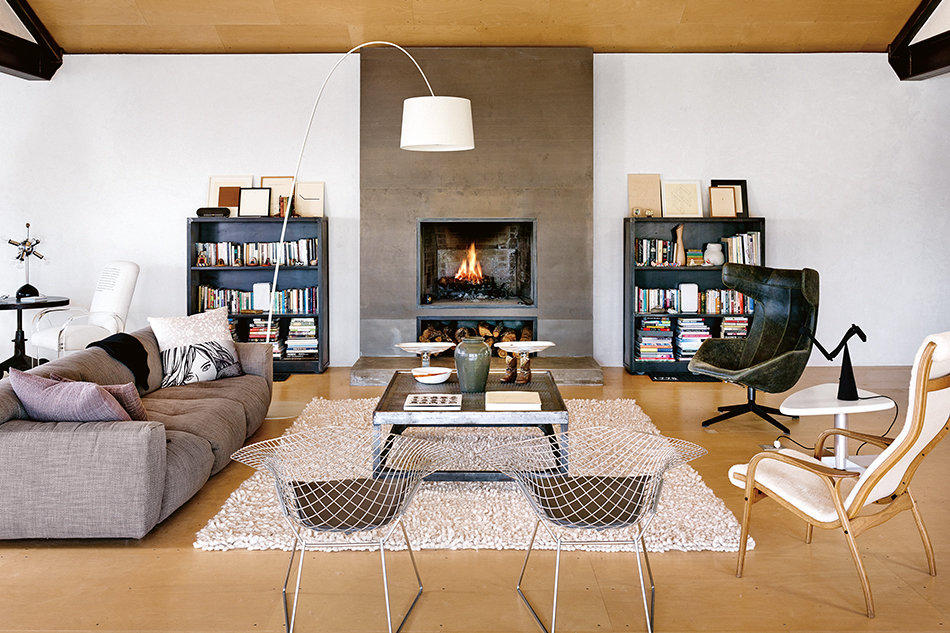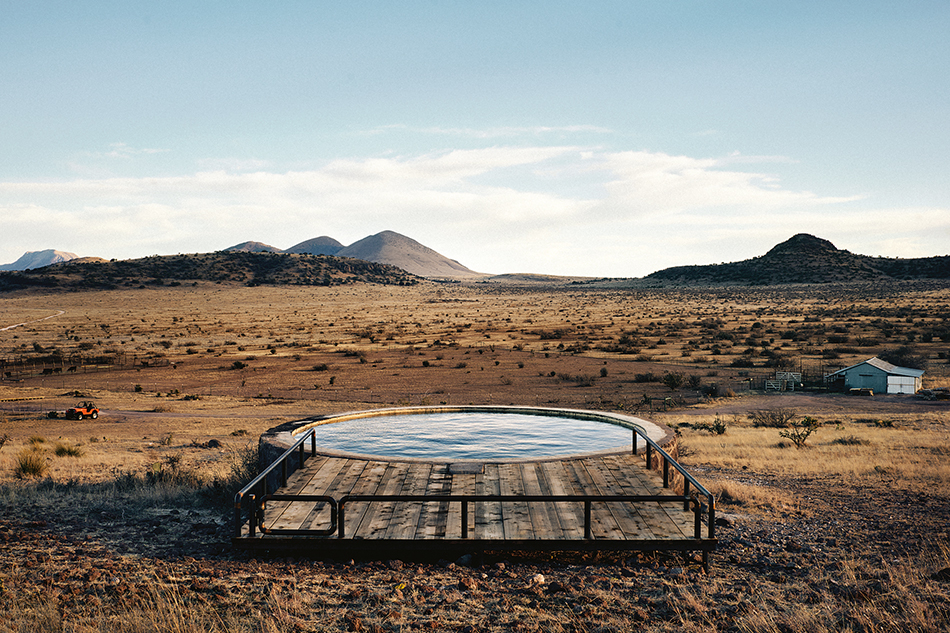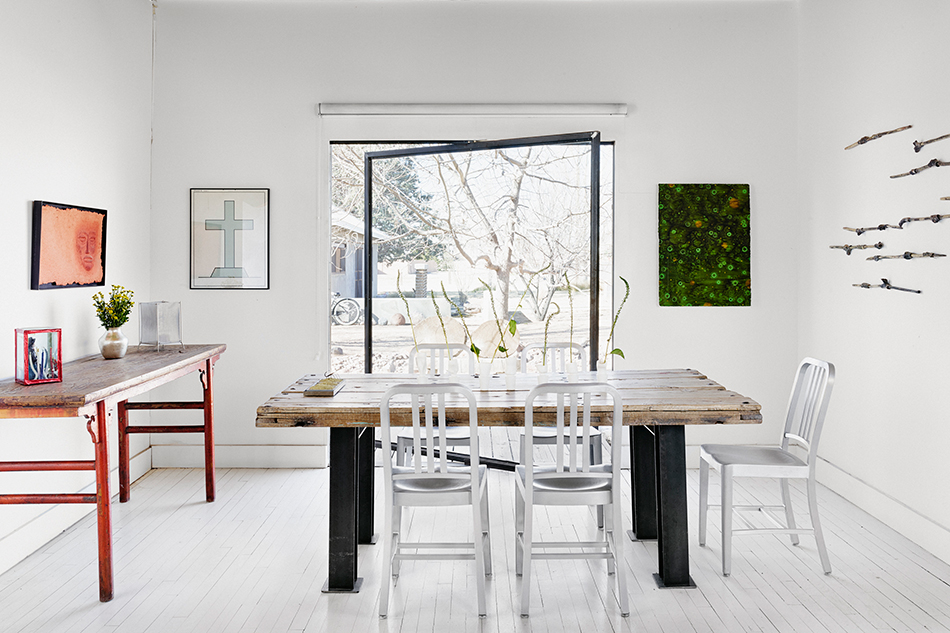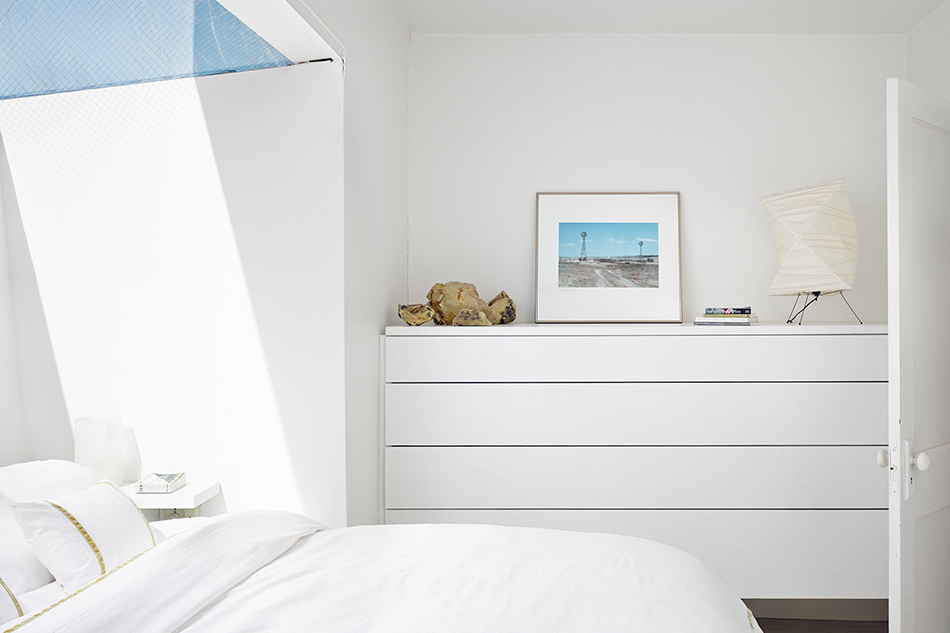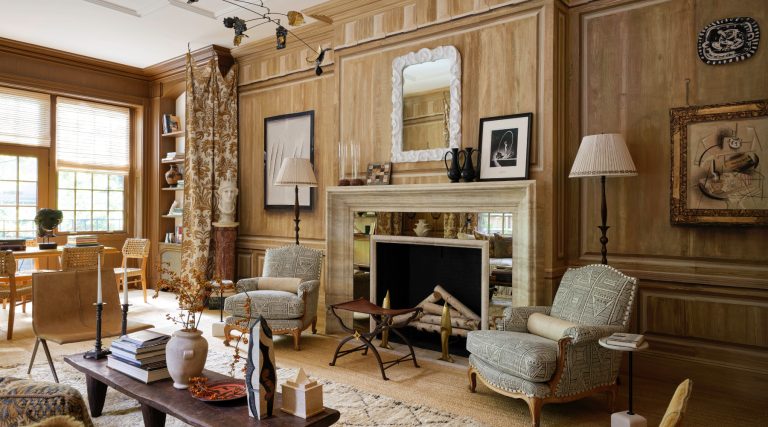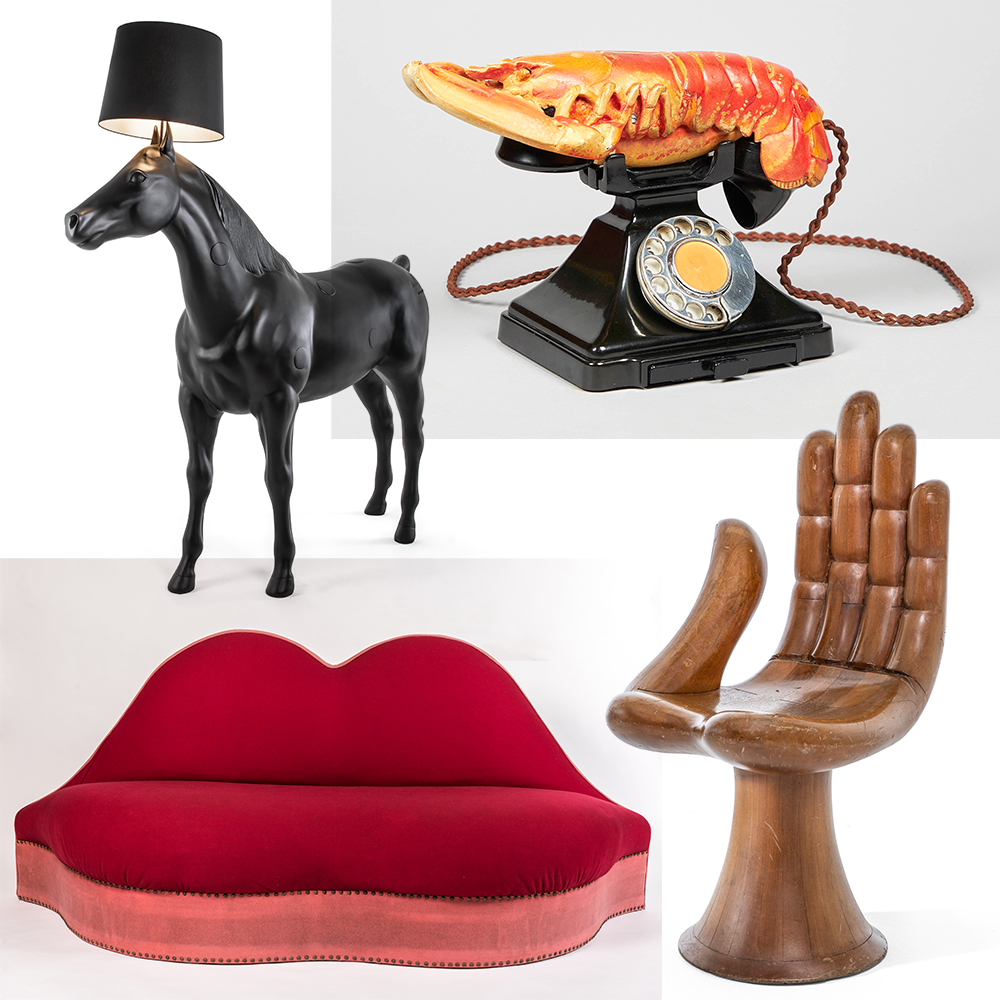
November 21, 2016The new book Marfa Modern: Artistic Interiors of the West Texas High Desert — written by Helen Thompson with photographs by Casey Dunn — brings together 21 artfully minimalist homes. Architect Ron Rael placed the window in a bedroom of the Box Box house to catch early morning light. Top: Windows in the living room of a house by architect Carlos Jiménez frame what Thompson describes as “majestic views of the horizon.” All photos © Casey Dunn, courtesy of Monacelli Press
Marfa, Texas, is a magical place. You feel something special when you’re there, although it’s hard to figure out exactly what. The uncertainty adds to the thrill. Donald Judd moved to Marfa in 1971, attracted by its abandoned buildings and wide-open spaces, both of which he turned into galleries. In the process, he transformed a speck (the current population is under 2,000) between El Paso and Midland into a capital of minimalist art. Judd died in 1994, but Marfa has continued to evolve. One example: Robert Irwin’s ghostly reconstruction of an old hospital building — a career-capping installation — debuted earlier this year.
Of the many people who come to Marfa for the art, a small percentage fall so in love with the place that they buy houses there or, in some cases, commercial buildings that they then turn into houses. Given what drew them to Marfa in the first place, it should come as no surprise that these new arrivals have a refined aesthetic, and that their homes reflect that. To a Judd aficionado, a window set in a wall is a work of art — or it can be, if it’s positioned in just the right way.
For her new book, Marfa Modern: Artistic Interiors of the West Texas High Desert (Monacelli Press), Austin-based design writer Helen Thompson made dozens of trips to the town, seeking out and documenting its most striking residences. Photographer Casey Dunn accompanied her on these missions, shooting pictures that captivatingly reveal what makes these houses special: an ability to do a lot with a little. Marfa is dusty and nearly deserted at times — not a place to stockpile precious possessions. So the real prizes there are space, light and breezes. Big city comforts are, in many cases, dispensed with. As Thompson writes, in Marfa, “[a]ir conditioning is courtesy of open doors and windows.”

Behind her main house, Lambert built a row of outbuildings that combine a modernist aesthetic with local materials. This one is both for bathing and for admiring the rocky views.
Thompson includes several recently constructed houses in the book, including one made of cinder block and stucco by local builder-designer Jamey Garza. The brightness and variety of its rooms belie its modest 1,200 square feet. That’s the same size as a boxy house by Ronald Rael, of the Oakland firm Rael San Fratello, made of mud and brick plastered with cactus mucilage and straw. And it’s about equal in area to a house built by top San Antonio–based architecture firm Lake|Flato, which used pre-fab units dressed up with generous overhangs and porches. The one really large house, the 8,000-square-foot Ranch on the Horizon, seems bit out of place in Marfa, despite its lovely detailing by Houston architect Carlos Jiménez.
But the real treasures are the older buildings — including a filling station and a former dance hall — that have been updated (or, perhaps, backdated) by inspired renovators whose approach tends to involve stripping away anything that’s not essential. What are left are unadorned surfaces and strong proportions. As Thompson so beautifully puts it, these modest building are reminders that “a century’s worth of prescience preceded the modernist movement.”
Barbara Hill, a Houston-based interior designer and former gallery owner who has renovated three houses in Marfa, describes her process as “archaeological.” She found a hundred-year-old dance hall that had been chopped up into little rooms and allowed it to emerge (after her crew filled eight dumpsters with refuse) as a single sprawling space finished with plywood floors and ceilings. Employing her gallerist’s eye, Hill filled the structure with a breathtaking mix of castoffs— a hotel sign with the texture of a Jasper Johns painting, for example — and furnishings whose silhouettes pop against a neutral backdrop.
Terry Nowell, an Austin-based chef and folk-art collector, took on the challenge of renovating a house that had been vacant since the 1950s. Along with sturdy furniture that he designed himself, Nowell deployed found objects with the kind of odd proportions and quirky profiles that satisfy repeated viewing. He even made the plumbing in his shower look artful, echoing Hill’s use of a bathtub as sculpture. In Marfa, as Thompson and Dunn make clear with this indispensable volume, art is everything, and everything is art.
PURCHASE THIS BOOK
or support your local bookstore.
